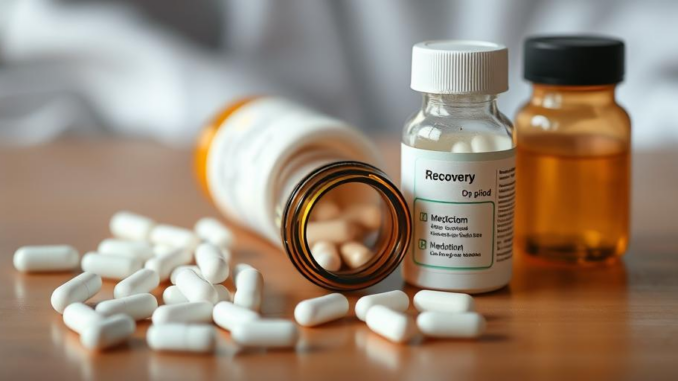
Summary
This article provides a comprehensive guide to Medication-Assisted Treatment (MAT) for opioid addiction recovery. We will explore the benefits of MAT, the medications used, and how to choose the right treatment plan. Finally, we offer practical advice for navigating the recovery journey with MAT.
** Main Story**
Overcoming Opioid Addiction: A Guide to MAT
Opioid addiction is a severe public health crisis, but recovery is possible. Medication-Assisted Treatment (MAT) offers a beacon of hope for those struggling with opioid use disorder. Combining medication with counseling and behavioral therapies, MAT provides a “whole-patient” approach to recovery. This article serves as your guide, providing practical steps and essential information to help you understand and access MAT.
Understanding MAT: A Holistic Approach
MAT isn’t just about medication. It’s about addressing the physical and psychological aspects of addiction. Medications help stabilize brain chemistry, reduce cravings, and manage withdrawal symptoms, allowing individuals to focus on therapy and rebuilding their lives. The ultimate goal is not just abstinence, but achieving a fulfilling life free from the grip of addiction. Think of it as a comprehensive toolkit, equipping you with the necessary resources to navigate the challenges of recovery.
Exploring MAT Medications: Finding the Right Fit
Several FDA-approved medications are available for MAT, each working differently to support recovery:
-
Methadone: This long-acting opioid agonist prevents withdrawal, reduces cravings, and blocks the euphoric effects of other opioids. It requires daily administration at a specialized clinic, offering a structured approach to treatment.
-
Buprenorphine: Available as a sublingual film or tablet (Suboxone, Subutex), or injection (Sublocade, Buvidal), buprenorphine acts as a partial opioid agonist, reducing cravings and withdrawal symptoms with a lower risk of overdose compared to methadone. It offers more flexibility, as it can be prescribed by certified physicians in an office setting.
-
Naltrexone: This opioid antagonist blocks the effects of opioids, preventing relapse and reducing cravings. Available as a monthly injection (Vivitrol) or daily pill, naltrexone requires opioid abstinence before starting, making it suitable for individuals who have completed detoxification.
Choosing the Right Path: Personalized Treatment Plans
The most effective MAT program is one tailored to your individual needs. Consider the following factors:
-
Severity of addiction: The intensity and duration of opioid use can influence medication choice.
-
Medical history: Co-occurring medical or mental health conditions may require specific medications.
-
Personal preferences: Comfort levels with different medications and treatment settings are important.
-
Support system: Access to transportation and social support can impact treatment adherence.
Discuss these factors with a healthcare professional to determine which medication and treatment setting best aligns with your circumstances and goals.
Embracing MAT: Steps to Recovery
-
Seek professional help: Contact a healthcare provider or addiction specialist to discuss MAT options.
-
Undergo a comprehensive assessment: This evaluation will help determine the severity of addiction, co-occurring disorders, and appropriate treatment plan.
-
Begin MAT: Follow the prescribed medication regimen and attend counseling sessions.
-
Engage in therapy: Behavioral therapies such as cognitive-behavioral therapy (CBT) and contingency management can help address underlying issues contributing to addiction and develop coping mechanisms.
-
Build a support system: Connect with support groups, family, and friends to strengthen recovery efforts.
Long-Term Recovery with MAT: Maintaining Progress
Recovery is an ongoing journey, not a destination. Long-term MAT can provide sustained support, reducing the risk of relapse and improving overall well-being. Regular check-ups with your healthcare provider, continued therapy, and active participation in support groups can help maintain progress and navigate challenges.
Beyond Medication: Holistic Wellness
While MAT addresses the physical aspects of addiction, holistic wellness is crucial for long-term recovery. Prioritize self-care by focusing on:
-
Nutrition: Nourishing your body with healthy foods supports physical and mental well-being.
-
Exercise: Physical activity releases endorphins, reduces stress, and improves mood.
-
Sleep hygiene: Adequate sleep promotes emotional regulation and reduces cravings.
-
Mindfulness: Practices like meditation and yoga can enhance self-awareness and stress management.
-
Stress management: Developing healthy coping mechanisms for stress is crucial for relapse prevention.
By incorporating these practices, you can cultivate resilience and build a foundation for a healthier, more fulfilling life.


Be the first to comment